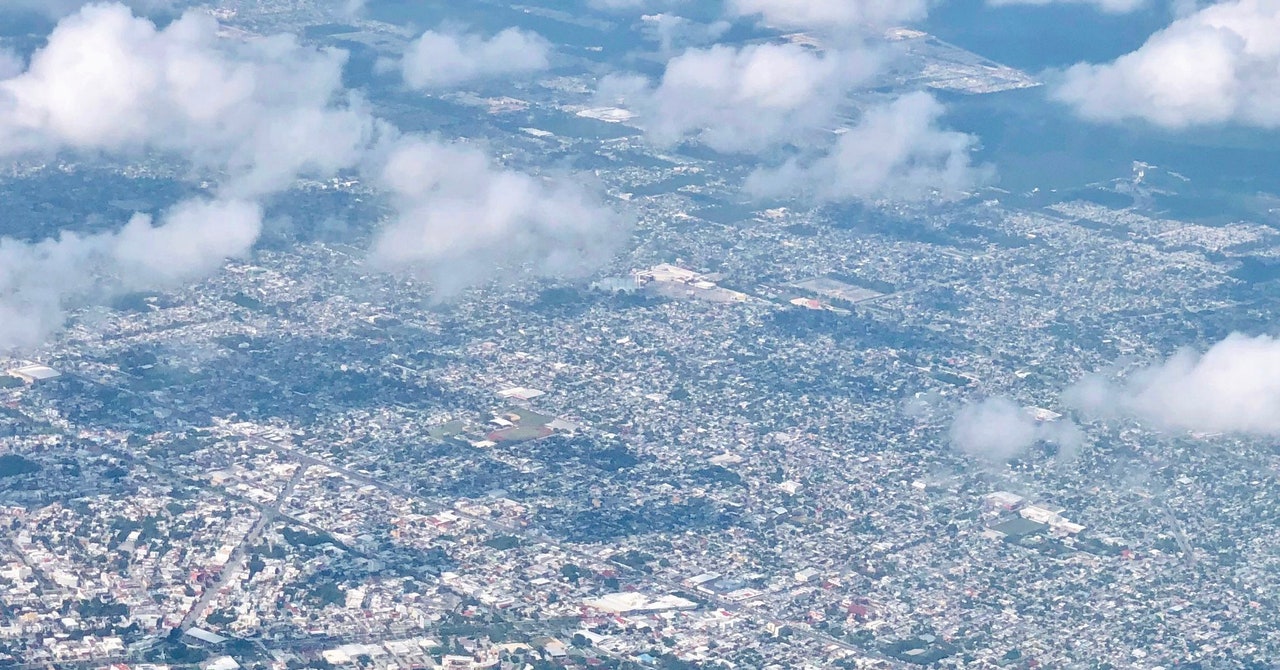
This story originally appeared on WIRED en Español and has been translated from Spanish.
The wide mowed lawns and leafy trees, the sports fields shining under their illuminated lights, the bouncy castles in the children’s play areas—especially the bouncy castles—are what Celia Pérez Godínez envies. These are the trappings of the wealthy neighborhood she travels to every day as a domestic worker in Cancún. Pérez envies the rich.
She tells me this sitting on a rotten wooden bench one August afternoon, her 7-year-old son getting his scooter stuck on the broken path here many miles away in the north of the city, in a tiny park. Full of garbage and wild vegetation, it’s a short distance from where Pérez lives, close to the city outskirts. As we talk, a homeless person in the background shouts and laughs as if at a joke only he understands.
Pérez is a 33-year-old single mother from San Marcos, Guatemala. She migrated in 2013 to Cancún, Mexico’s over-promoted and hugely popular tourist destination. She rarely has enough time and money to go to the beach and cannot find green areas or decent, safe public spaces for her son to play, having to make do with the few parks, like this, that are available. This is not the life she expected. “You hear that Cancún is wonderful, but when you get here … it’s a disappointment.”
At 54 years old, Cancún is the youngest city in Mexico. It was designed from scratch in the 1970s as a new holiday destination in the country. In this respect, it’s been a wild success. But as an urban project, it is a failure. Designed for 200,000 people, the population of its urban sprawl now exceeds 1 million. Before, much of this area was jungle; today there are hundreds of hotels. Accelerated real-estate development has bitten into the surrounding vegetation year after year.
This growth has been an environmental nightmare but also a social one, giving vastly unequal benefits to the city’s richer and poorer inhabitants. According to recent research by Christine McCoy, an academic at the University of the Caribbean, most people in Cancún live without the minimum green areas or public spaces needed for proper recreation, leisure, rest, or socializing. This is especially true in those regions where the most vulnerable live.
Click play to see Cancún’s urban development from 1984 to 2022.
This inequality has evolved despite Cancún’s rapid expansion consuming huge amounts of green space. Between 2001 and 2021, the surrounding region lost at least 30,000 hectares of jungle, according to data from Mexico’s National Forestry Commission. On the land ripped from the jungle there are now residential and hotel projects. And according to data seen by WIRED, plenty more developents are on the way. At the federal level, since 2018 the Ministry of Environment and Natural Resources has received 40 requests for further land use change in the area. If approved, 650 more hectares of jungle will disappear.
Data obtained through freedom of information shows what urban development projects have been processed over this period, these ranging from 2,247 tiny, popular housing units on the one hand to a 20-story, 429-room all-inclusive luxury hotel. Crucially, none of these include applications for public parks or green areas to be developed or improved, in a city that is already bursting at the seams, having exceeded its tourist carrying capacity for more than a decade.
Services Marketplace – Listings, Bookings & Reviews
